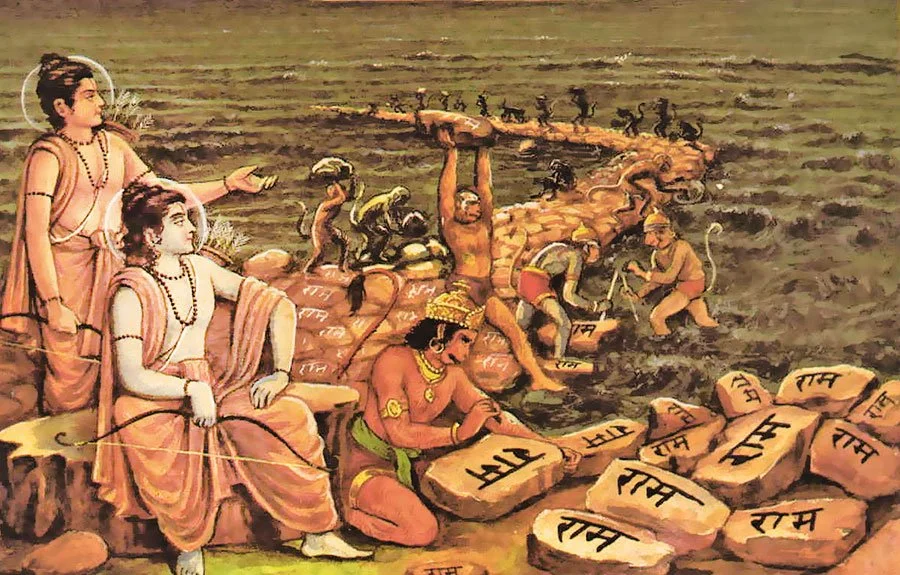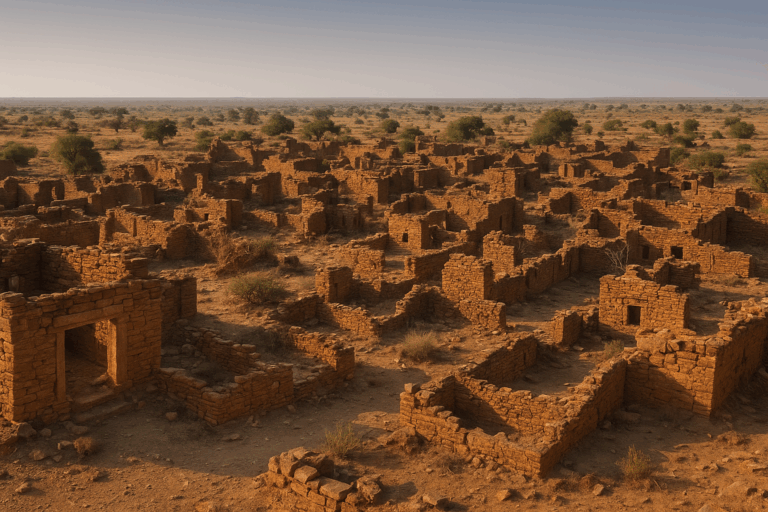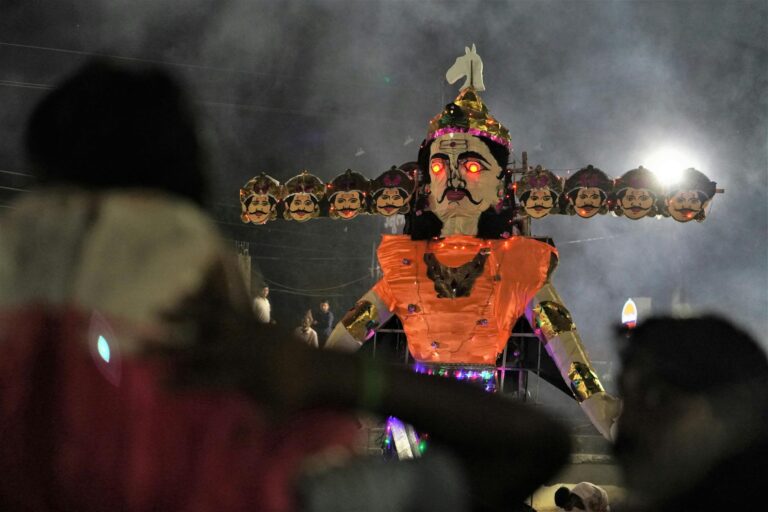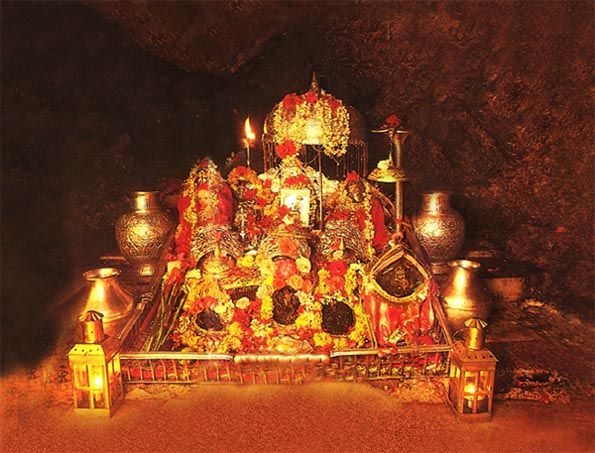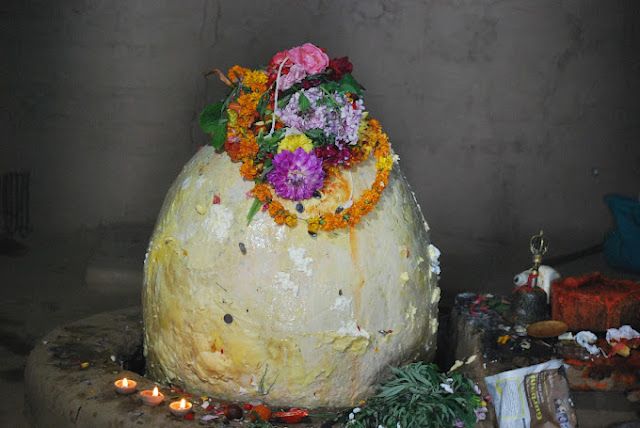If you stand at the southernmost tip of Rameswaram Island in Tamil Nadu, gazing into the vast, glittering waters of the Palk Strait, you are staring at one of the most debated and celebrated marvels in Indian tradition — Shri Ram Setu, also known as Adam’s Bridge.
It is not just a line of stones and sandbars under shallow water. For millions, it is the physical proof of an epic that has lived for thousands of years — the bridge Lord Rama and his Vanara Sena built to cross over to Lanka and rescue Sita Mata from Ravana.
The air here feels different — salty, yes, but heavy with centuries of chanting, prayers, and pilgrims’ footsteps. And every wave that laps the shore whispers an old tale: “This was the path of dharma.”
Important Note for Readers
This post is part of our Tirth and Itihas category, where we explore the fascinating intersections of history and faith in Hindu heritage. Here, you will find a careful weaving of facts from archaeology, ancient texts, and oral traditions — without diluting their spiritual essence. Some parts are verifiable history, others live in the realm of devotion and folklore. In Sanatan Dharma, truth is not only what is measured but also what is felt.
The Epic Account – From the Ramayana
According to Valmiki’s Ramayana, the need for the bridge arose when Ravana abducted Sita Mata and took her to Lanka. Lord Rama, determined to uphold dharma, allied with Sugriva, the Vanara king, and his mighty army. When they reached the seashore at Rameswaram, the ocean seemed an unending barrier.
For three days, Rama prayed to Varuna, the Lord of the Seas, to grant safe passage. But the ocean remained restless. Finally, Rama lifted his bow to dry up the waters. Varuna appeared, humbled, and advised that a bridge of stones could be built — stones that would float if marked with Rama’s name.
Enter Nala, the engineer among the Vanaras, blessed with the skill to build anything. Under his guidance, countless Vanaras carried massive boulders from forests, mountains, and riverbanks. Miraculously, every stone inscribed with “राम” floated instead of sinking.
The work continued day and night, chants of “Jai Shri Ram” echoing across the shore. Finally, a 100-yojana-long bridge (roughly 130 km) stretched from Rameswaram to Lanka, strong enough for the entire army to cross.
The Visible Remains – Science Meets Faith
Here’s where aadhi haqeeqat meets aadha fasana. Modern satellite imagery by NASA and ISRO shows a chain of limestone shoals between Pamban Island (India) and Mannar Island (Sri Lanka). Geological studies date parts of this structure to anywhere from 3,500 to 7,000 years old, while some argue it could be even older.
Skeptics say it’s a natural formation called a tombolo — a ridge formed by wave action and sediment deposits. Believers counter that the uniform alignment and distribution of the stones match the Ramayana’s description of deliberate construction.
Interestingly, divers have reported that many stones in the area appear different from the local seabed composition — lighter, more porous, resembling coral or pumice. These are the kinds of stones that could float, at least temporarily, when dry and air-filled — just as the epic says.
The Pilgrim’s Experience – Rameswaram Today
Visiting Rameswaram is more than sightseeing; it’s a pilgrimage. The Ramanathaswamy Temple, one of the 12 Jyotirlingas, stands as a spiritual jewel here. Before heading towards Dhanushkodi — the point nearest to the Setu — devotees often bathe in the 22 sacred wells within the temple complex.
Dhanushkodi itself is haunting. Once a bustling town, it was destroyed by a cyclone in 1964. Now, only ruins remain, surrounded by windswept beaches. Locals point to a spot in the water they call Ram Setu, where, on a clear day, the line of submerged stones is still visible.
Boats take pilgrims closer, though no one is allowed to walk on the actual formation, both for preservation and safety. From a distance, it appears like a dotted causeway beneath the turquoise sea — almost as if waiting for the Vanaras to return.
Faith Beyond Proof
Whether the Ram Setu is a man-made engineering marvel from the Treta Yuga or a naturally occurring wonder sanctified by faith, it has already achieved something greater than scientific debate — it has become a bridge of belief. It connects India to Sri Lanka, yes, but also connects the human heart to its own capacity for devotion, courage, and sacrifice.
In Sanatan thought, the physical and the metaphysical are not at odds. A devotee standing at the shore does not care whether the stones were coral or granite, or whether carbon dating says 7,000 years or 17,000. The truth is in the feeling — the moment you close your eyes and hear the surf, you can almost picture the Vanaras carrying stones, chanting Rama’s name.
Aadhaa Haqeeqat, Aadhaa Fasana
The Ram Setu will always live between two worlds:
- The world of historical timelines, sediment deposits, and geological formations.
- And the world of epic verses, divine intervention, and unshakable bhakti.
Perhaps that’s what makes it eternal — it is not bound by the limits of one reality. It is a path both on earth and in the soul. And like Lord Rama’s own journey, it asks us to walk in faith even when the waters ahead seem impossible to cross.

